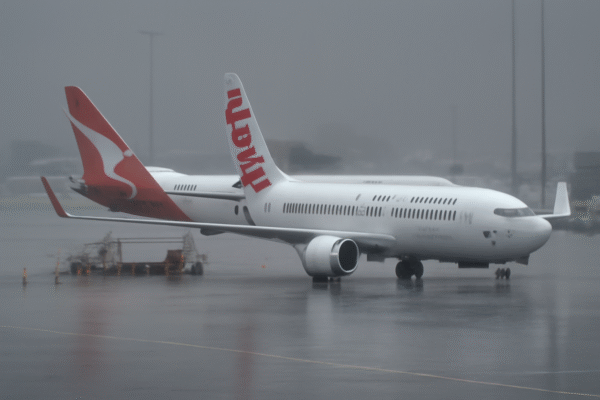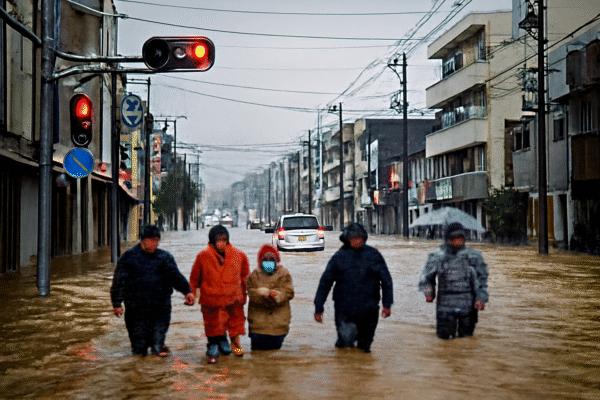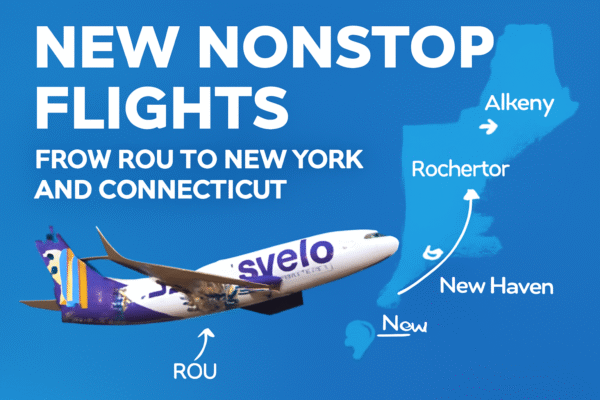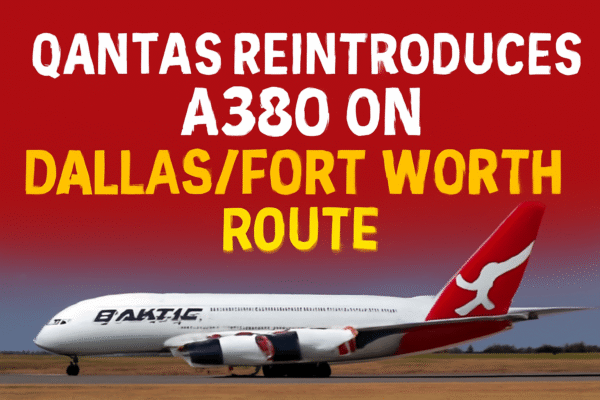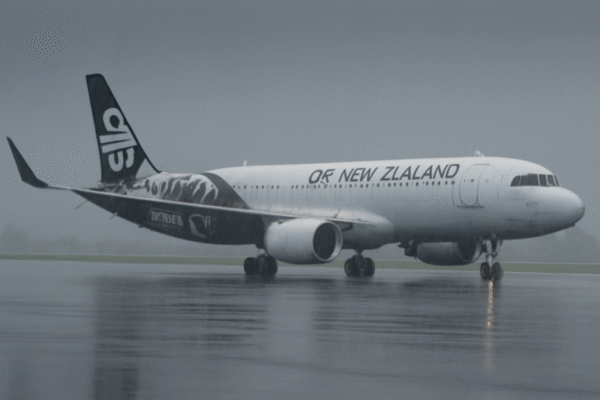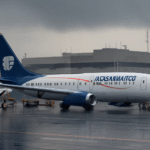New Zealand’s aviation sector is grappling with significant disruptions as over sixty Air New Zealand flights were delayed or cancelled due to adverse weather conditions. Heavy rain and low visibility at Auckland, Wellington, and Christchurch airports have caused widespread travel chaos, frustrating travelers and leaving many scrambling for alternate travel plans.
These delays and cancellations are attributed to the rapidly changing weather, which is a hallmark of New Zealand’s climate, especially during the transitional seasons. The country’s well-known variability in weather has once again demonstrated its impact on the aviation industry, creating considerable challenges for both airlines and passengers.
Weather Chaos Across Key New Zealand Airports
Air New Zealand, the nation’s flagship carrier, was forced to cancel six flights and delay an additional 53, accounting for a significant percentage of its daily schedule. The cancellation of flights represents around 1% of the airline’s total flights, while the delays impact an estimated 11% of the schedule. Flights across both domestic and international routes were affected, leaving thousands of passengers stranded, frustrated, and facing long delays.
The key airports impacted were Auckland International Airport (AKL), Wellington International Airport (WLG), and Christchurch International Airport (CHC). These three airports serve as major hubs for both domestic and international air traffic, and their disruption rippled across the nation and beyond.
Flight Cancellations and Delays: Which Routes Were Affected?
A few notable flights affected by these weather-related disruptions include:
- ANZ5704: Departing Invercargill to Christchurch at 08:35 AM NZST, this regional connection was among the many cancellations.
- ANZ5591: The popular Wellington to Christchurch flight at 01:55 PM NZST, a key route connecting two of New Zealand’s largest cities.
- ANZ5319: Another crucial domestic route, Wellington to Nelson at 05:17 PM NZST, served regional travelers heading to the northern South Island.
- ANZ5: The long-haul international flight from Los Angeles to Auckland, which was scheduled for 10:20 PM PDT.
- ANZ5286: Wellington to Gisborne at 05:55 PM NZST, a flight that was vital for those traveling to the eastern regions of the North Island.
- ANZ28: Auckland to Houston at 07:50 PM NZST, an important international connection between New Zealand and the United States.
In addition to the cancellations, numerous flights across various destinations experienced delays, leaving passengers uncertain about new departure times and overwhelmed by disrupted travel plans. For many, these delays meant missed connections, rearranged accommodations, and even financial repercussions due to the changes in their itineraries.
The Impact of New Zealand’s Weather on Flight Operations
New Zealand’s weather is infamous for its unpredictability, and this incident demonstrates the challenges that airlines face while operating in such a volatile climate. Heavy rainfall severely impacts visibility, making it difficult for pilots and air traffic controllers to safely navigate aircraft. Low visibility can force airports to rely on instrument-based navigation systems, which, while effective, slow down the overall flow of air traffic.
Additionally, wet runway conditions increase the risks of hydroplaning, which further complicates the takeoff and landing process. These hazardous conditions necessitate additional safety protocols, causing a backlog in operations and delays that ripple throughout the system.
Airports Strain Under the Weather Pressure
The weather conditions have not only affected flight schedules but have also placed additional stress on the infrastructure of New Zealand’s busiest airports. Both Auckland International Airport, New Zealand’s largest, and Wellington and Christchurch airports have had to activate emergency protocols to ensure safety while managing passenger flow.
Auckland International Airport, typically managing over 20 million passengers annually, has faced disruptions due to longer turnaround times and delays in international flights. Meanwhile, Wellington Airport, known for its strong winds, has experienced added challenges from heavy rain and low visibility, further compounding the difficulties travelers faced.
Christchurch International Airport, as the gateway to the South Island, has also been severely impacted, with both domestic and international flights affected by the poor weather conditions.
Air New Zealand’s Efforts to Assist Affected Passengers
As the weather continues to cause problems, Air New Zealand has stepped up its support for affected passengers. The airline has been offering rebooking options for those with cancelled flights, including options to book through partner airlines. For passengers experiencing prolonged delays, Air New Zealand has provided accommodation or meal vouchers to alleviate the inconvenience.
In addition, the airline has increased staffing at both airports and customer service call centers to assist with rescheduling, inquiries, and general customer support. Regular updates have also been shared through social media channels and the airline’s mobile app, allowing travelers to stay informed about the status of their flights.
Advice for Travelers
For those planning to fly in the coming days, it is important to remain flexible and stay updated on the situation. Travelers are advised to monitor their flight statuses through Air New Zealand’s official channels, including the website, mobile app, and social media. It is also recommended to arrive earlier than usual at the airport to allow for longer check-in and security processing times.
Moreover, passengers should have contingency plans for possible delays, including backup transportation or accommodation options. Staying informed about the evolving weather conditions is crucial, as forecasts suggest that further disruptions may be possible due to the ongoing storms.
Looking Ahead: The Future of Aviation in New Zealand’s Changing Climate
This weather-related disruption highlights a broader issue in New Zealand’s aviation industry: the challenges posed by increasingly volatile weather patterns. As the climate continues to change, such disruptions may become more frequent, and the aviation industry will need to adapt to ensure safety without compromising service reliability.
Airlines and airports are exploring various technological advancements to mitigate the effects of adverse weather, such as improving radar systems, investing in better airport infrastructure, and enhancing pilot training for difficult weather conditions.
Conclusion: A Reminder of the Power of Nature
The recent disruptions at Auckland, Wellington, and Christchurch airports serve as a reminder of the complex challenges airlines face in balancing safety and reliability. While Air New Zealand has worked tirelessly to minimize the impact on passengers, the unpredictable nature of New Zealand’s weather remains a powerful force that can affect travel plans at any time.
For now, travelers are encouraged to stay patient and keep monitoring their flight information, as the airline continues to adjust its schedules in response to the weather. It is clear that as New Zealand navigates these challenges, the resilience of its aviation industry will be tested in the years to come.
For more travel news like this, keep reading Global Travel Wire





